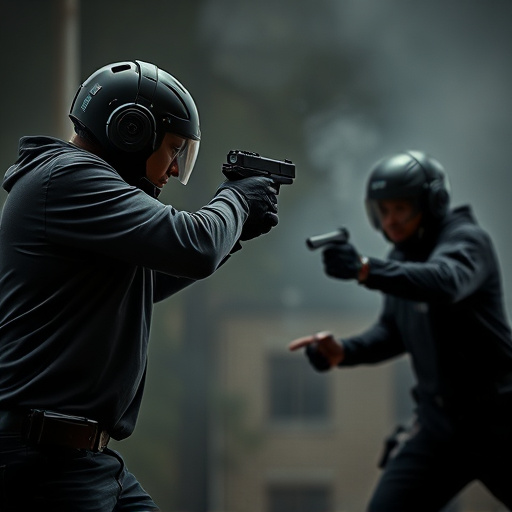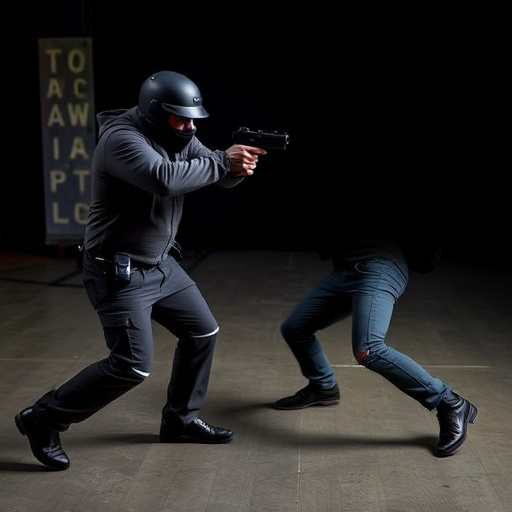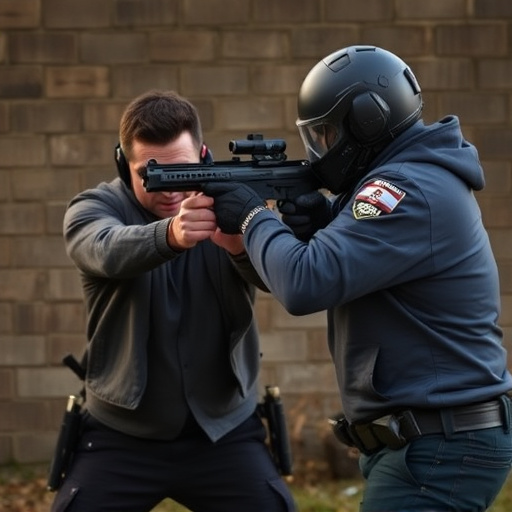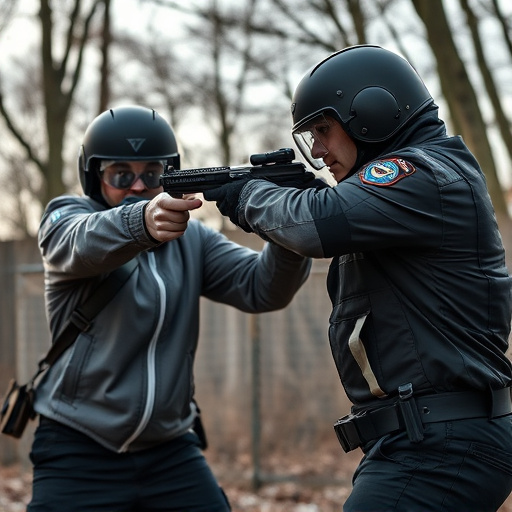Stun guns, like Tasers, temporarily disable through electric shocks, with effectiveness varying by model and target conditions. Duration of paralysis impacts legal considerations and personal safety. Choosing from best compact stun guns under $50 requires understanding voltage, weight, activation ease while adhering to local laws for responsible use in personal defense scenarios.
In today’s world, understanding the impact and duration of paralysis caused by taser deployment is crucial for both law enforcement and citizens considering self-defense options. This article delves into the factors influencing how long individuals remain paralyzed after a taser strike, focusing on the key elements that can extend or reduce this period. Additionally, it explores legal implications and offers insights into choosing effective yet affordable self-defense tools, with an emphasis on the best compact stun guns under $50 for those seeking accessible protection.
- Understanding Taser Deployment and Its Effects
- Factors Influencing Paralysis Duration
- Legal Implications of Taser Use
- Choosing Effective Self-Defense Tools: Stun Guns Under $50
Understanding Taser Deployment and Its Effects

Tasers, or stun guns, are non-lethal weapons designed to temporarily incapacitate a person by delivering an electric shock through two probes connected to the device. When deployed, Tasers trigger a cascade of physiological responses in the target, leading to muscle contractions and loss of balance. This disruption can last from several seconds up to a few minutes, depending on various factors such as the model of Taser used, the distance between the probes and the target, and the individual’s physical condition.
While Tasers are often employed by law enforcement for crowd control or in situations requiring temporary immobilization, their deployment should be carefully considered. In recent years, there has been heightened scrutiny on Taser use due to concerns regarding potential health risks, including respiratory distress and cardiac complications, especially in individuals with pre-existing medical conditions. As such, it’s crucial to understand the duration of paralysis caused by Tasers, particularly when comparing different models, such as those among the best compact stun guns under $50, available on the market.
Factors Influencing Paralysis Duration

The duration of paralysis induced by a taser deployment varies widely and is influenced by several factors. One key factor is the model and power output of the stun gun used; advanced models with higher voltage can cause longer periods of immobilization. Additionally, the placement of the electrodes on the target’s body plays a significant role. Contacting vital areas like the chest or abdomen may result in prolonged paralysis compared to less critical regions.
Another important consideration is the subject’s physical condition and size. Larger individuals often experience shorter durations of paralysis due to their higher muscle mass, while smaller individuals or those with certain medical conditions might remain paralyzed for extended periods. Furthermore, environmental factors such as temperature and humidity can impact how long a person remains paralyzed, with warmer climates potentially lengthening the effect. Understanding these variables is crucial when considering the best compact stun guns under $50, where efficiency and effectiveness are paramount.
Legal Implications of Taser Use

The legal implications of taser deployment vary across jurisdictions, with each region having its own set of regulations and guidelines. In many places, law enforcement officers are permitted to use tasers as a non-lethal force option, especially in situations where physical restraint is necessary for public safety. However, the duration of paralysis induced by a taser can significantly impact the legal outcome of an incident. Prolonged immobilization may lead to increased scrutiny, particularly if it results in injuries or exacerbates existing medical conditions.
When considering self-defense options, those interested in purchasing a stun device should explore compact and affordable alternatives, such as best compact stun guns under $50. These devices offer personal safety without the same legal complexities associated with tasers. As with any weapon, users must understand local laws and use them responsibly to avoid potential legal repercussions.
Choosing Effective Self-Defense Tools: Stun Guns Under $50

When considering self-defense tools, choosing a stun gun is an effective and affordable option for personal safety. In today’s world, compact and discreet devices are gaining popularity due to their ease of use and portability. For those seeking reliable options without breaking the bank, there’s a range of best compact stun guns available under $50. These devices offer powerful jolts, ensuring an attacker is temporarily incapacitated, providing you with precious time to escape or seek help.
The market offers various choices, from small keychains to more substantial yet still lightweight models. When selecting the right stun gun, consider factors like voltage output, weight, and ease of activation. With a budget-friendly price point, these tools are accessible to many, empowering individuals to take control of their safety without compromising on quality or effectiveness.
In conclusion, understanding the duration of paralysis from taser deployment is crucial for both public safety and legal considerations. By recognizing the factors influencing this effect, such as distance, target’s physical attributes, and environmental conditions, individuals can make informed decisions when choosing self-defense tools, including the best compact stun guns under $50. Additionally, being aware of legal implications ensures responsible use, promoting a safer society.
